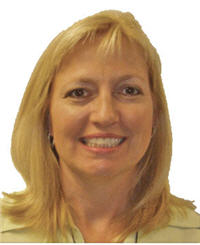HP Software CTO: Virtualization and cloud sourcing sprawl likely

HP Software sees a lot of sprawl on the horizon with virtualization and cloud computing.

Erbes knows her way around business processes and automating operations. She develops strategy for HP's business technology optimization software, which is used for IT management, and applications for the communications, media and entertainment industries.
Here are a few notable points from our talk: On her role, Erbes is viewed as a bridge of sorts between HP Software and EDS. EDS and HP Software will increasingly work together on developing products. EDS is also a channel that can help HP Software's license uptake, says Erbes.
When it comes to emerging issues, Erbes says that improving policy management (and automating it) and the management of virtualization are two themes that will move to the front among CIOs. Cloud computing will also be a big theme, but managing multiple vendors will be a headache. "What we'll need is better automation tools and a full complement of rules baked in," says Erbes.
She added that companies need to focus on their policies and how rules for things like storage, applications, cloud computing and storage all work together. If these policies aren't well thought out the effort to automate infrastructure can be wasted and wind up costing you more. "You can do bad things with automation," says Erbes.
On the need to manage virtualization efforts, Erbes said the problem of "virtualization sprawl" is becoming real. Developers have adopted virtualization and IT managers don't use the rigor needed for its use. For instance, if some department wants a new server a virtual machine can be created in minutes. Multiply those departments in a multinational corporation and you have a lot of virtual machines. The problem? There are too many virtual machines to be managed. "When companies had to buy a server these requests used to be scrutinized," says Erbes. "Now the lack of costs with virtual machines has eliminated the rigor and you have a lot of dead VMs."
What's wrong with dead VMs? Erbes says there's nothing wrong with them on the surface. However, virtualization litter may put a company out of compliance with software licensing terms. Simply put, virtualization without rigor may equate to a big software licensing bill if companies aren't careful.
Will everything be virtualized? Erbes says no. "Application architecture is often an inhibitor," says Erbes. "Stagnant (think legacy apps) don't need to be virtualized." Apps that are similar and can be consistent can be virtualized and automated. Ultimately, a lot of the IT portfolio will be virtualized, but there will be a layer of applications that will resist automation and run in the background. "Transformation is a lot of hard work," says Erbes. "You can't take an IT hairball and fix it overnight."
Given sprawl is an emerging theme, what other areas are likely to be trouble spots? Erbes says cloud computing sourcing will also become a headache. IT departments are already losing control over cloud computing and SaaS sourcing. Why? Multiple divisions in a company may have unique cloud computing providers. "There is a potential shadow sourcing problem with the cloud," says Erbes. "SaaS sprawl is already happening." What's missing in the HP Software portfolio, which focuses largely on automation and IT management? Erbes says security is a missing element. "I'm not saying that we wish we had an identity access management technology, but there needs to be a federated security layer that manages entitlements, roles and integration," says Erbes, who added that security will have to evolve for companies that are increasingly becoming reliant on a bevy of partners.
Does that mean HP Software will go shopping for security companies? Erbes didn't rule out mergers and acquisitions, but did note that there's "nobody out there that's a clean pick" for the federated security vision she has. "It's a gap for all of us," says Erbes referring to HP and its chief rivals. The capability she mentioned will be developed over time via acquisition and internal efforts. Will enterprise apps increasingly look like Facebook and Google? Erbes says the corporations will have to make complicated applications appeal to "digital natives." "The interface will have to accommodate the expectations of that workforce at the end of the day," says Erbes. That said, not every application will need to be graphically appealing. "The interface will depend on the work being performed," she says. "For the monitoring guy every click matters. The key will be customizable views."